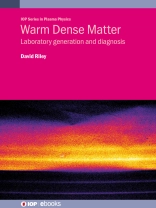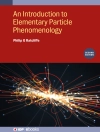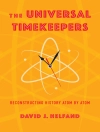This book provides an introductory overview of warm dense matter research for new postgraduate students entering the field. Author David Riley, based at the Centre for Plasma Physics at Queen’s University Belfast, covers a broad range of topics with an emphasis on experimental techniques.
The text begins with an introduction to the basic physics of warm dense matter and its important features, then moves on to discuss the principal techniques for creating warm dense matter and approaches to diagnosing it. Topics covered include the generation of warm dense matter via laser driven shocks and X-ray sources, explosives, gas guns and ion beams, as well as X-ray free electron lasers. Principal optical and X-ray diagnostics are also discussed. The book concludes with an overview of the large-scale facilities that are most commonly used for warm dense matter research and the technologies they employ.
Key Features
- Written by a leading expert in the field.
- Includes discussion of the principal methods for creating and diagnosing warm dense matter.
- Covers recent advances in the field and new technologies.
- Provides an overview of research facilities currently in use and under development.
Tabela de Conteúdo
Preface
1 Background and context to warm dense matter
2 Shock and ramp compression
3 Volumetric heating of warm dense matter
4 X-ray diagnostics
5 Optical diagnostics
6 Facilities for warm dense matter research
Sobre o autor
Professor David Riley graduated with a BSc in physics from the University of Durham in 1984 and with a Ph D from Imperial College, University of London in 1989. He has worked at Queen’s University Belfast since 1994 and has authored or co-authored over 130 research papers in the general area of laser generated plasmas with many focussing on warm dense matter. He was elected a Fellow of the Institute of Physics in 2011.












